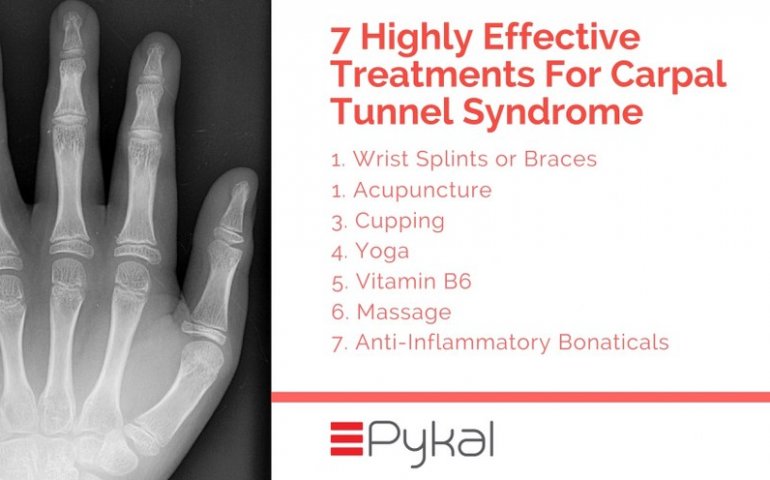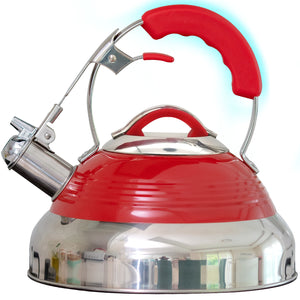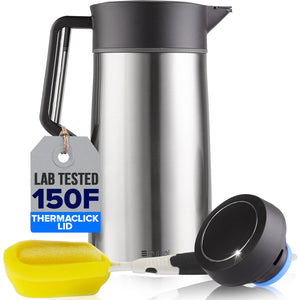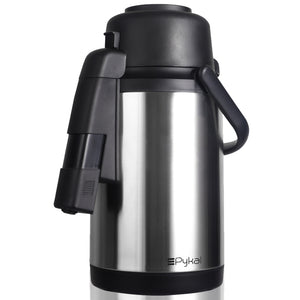
Years and years of statistical studies have shown: there is a positive association between highly repetitive work in combination with other job factors and Carpal Tunnel Syndrome (CTS). It is also interesting to note this Bureau of Labor Statistics (2002) data showing that repetitive motion, such as grasping tools, scanning groceries and typing resulted in the longest absences from work – a median of 23 days per employee – that’s even more than the flu! In this highly industrialized world, whether you deny it or not, many of us are at a risk of developing this disorder associated with repeated trauma from the physical demands of one’s job.
Now, where do we stand? Effective Cure and Pain Relief for those who have it and Early Detection & Preventive Measures for those who don’t. In this article, we have compiled 7 of the highly effective, non-invasive & non-surgical treatments for CTS PLUS Preventive Measures that works great as grip strengthener that you can do at the convenience of your home for those prone to CTS Risk Factors:
Disclaimer: These treatments were created with the principle that the treatments can be tried first before moving to more invasive procedures. Severe & Advanced Cases of CTS will likely need surgery or other more intensive treatment procedures. Before you try the below treatments, consultation with your healthcare provider is highly recommended.
If You Have CTS, here are your highly effective treatment options:
1. Wrist Splints/Braces
Probably the most popular option, wrist splints and braces immobilize and limit wrist movement to not aggravate inflammation in the carpal tunnel. Splints made at night for a few weeks relieve mild to moderate symptoms of CTS. When the wrist is relaxed and the joints in a neutral position, pressure to the median nerve is at its lowest. One study by Gerritsen (2002) showed 34% of CTS patients treated with splints not needing any other surgical or non-surgical intervention within a year of observation or so. When purchasing these splints, custom-fitted splints made of lightweight materials are highly recommended. Splints that don’t fit your hands could actually be more damaging. Best splinting practices includes splint/brace at night when the hands are most relaxed and rested. Experts strongly advise against wearing them while actively working – doing so can only do you more damage. Performing hand and finger exercises after a period of splint use is also needed to keep your hand muscles from weakening. Wrist Splints/Braces (Generic Fit) can be bought at your local drug shop or online without a prescription.
2. Acupuncture
This traditional Chinese Medicine technique has long been used to cure chronic pain and give relief to traumatic pain symptoms. One core principle of acupuncture is to restore chi (energy – the yin and yang) balance in the body. It’s a treatment that ensures proper nerve conduction & circulation. A most recent study by Napadow (2016) mapped the brain & nervous system’s long term responses to this treatment and CTS sufferers showed measurable physiological improvements and relief from pain 3 months after the test. CTS Studies in association with acupuncture also showed significant reduction in swelling and increased production of cortisol – a hormone responsible in reducing inflammation, relieving the median nerve compression.
3. Cupping
Another alternative medicine technique called Cupping also helps in chronic musculoskeletal illnesses. Cup of Glasses applied to the skin mimic that of a suction that stimulates circulation to underlying skin and soft tissue area. It is a traditional healing method that can be done two ways: dry or wet. Dry cupping is just as described while wet cupping additionally creates tiny cuts in the skin that bleeds and fills the cups 5-10 minutes, then removed. A study by the American Pain Society (2009) have shown that a single cupping treatment with CTS patients exhibited significant decreases in pain and other CTS symptoms and improved hand functionality for a week.
A word of caution however: NEVER do the pricking, needle poking or cupping all by yourself. From the Chinese Medicine Perspective – all cases are unique and different – so it is recommended that you arrange a short consultation with your specialist. They will develop a distinct treatment plan tailor-made to your diagnosis and pain levels. A combination of acupuncture, wet cupping, exercise, massage therapy and botanical treatments is the more holistic approach to treating carpal tunnel and other RSI-related injuries (Repetitive Stress Injury).
4. Yoga
Because your hands will also need some “healthy” twisting and stretching as hand strengthener, yoga provides a good alternative. Some good yoga poses include the Reverse Namaste, Mountain Pose, Dolphin Pose, Cat-Cow and many more. However, you should proceed with caution when performing yoga exercises. Avoid yoga poses like the Arm Balances, Full Wheel Pose and Downward Facing Dog Pose that places high pressure on your wrists. Aside from the physical benefits, yoga is all about relaxation and finding that balance within you so it pays greatly to listen to your body and adjust your yoga exercises accordingly to your individual needs.
5. Vitamin B6
Vitamin B6 acts as an analgesic. The vitamin triggers the pain receptors to raise their pain threshold. Some content as well that B6 somehow becomes a diuretic. Swelling and inelasticity in bodily tissues are said to be caused by B6 Deficiency. Many healthcare providers recommend Vitamin B6 intake for patients with nerve compression injuries like CTS, RSI, and arthritis to postpone hand surgery as much as possible. Some statistics even suggest that around 90% of CTS patients admit to be cured by Vitamin B6 – a pain fighting food indeed. Although the how Vitamin B6 does it in treating CTS is not clear, all practitioners agree that one has to be extremely careful not to overdose on Vitamin B6 intake. A word of caution: Vitamin B6, when taken in excess can potentially harm the central nervous system.
6.Massage
Deep Tissue Release Massage Therapy is highly effective in providing relief and treating CTS as many anecdotes have claimed. It is a really non-invasive treatment procedure that lasts 60-90 minutes per session with fees that may range between $25-$120 an hour. While claimed to be highly effective, it is seldom brought up by some doctors. This type of massage drains fluid that’s built up, release adhesions and scar tissue in the muscles of the wrist and forearms. Though relief is quick with this type of massage treatment, CTS symptoms don’t disappear right away after one session. Some improve significantly by continuing sessions.
7. Anti-inflammatory Botanicals
Just as how the ailment can be treated topically, what happens on the inside matters just as much. Healthy eating should still be observed to make sure you’re not taking foods that aggravate the illness. When you eat natural foods, you won’t have to worry on overdosing or treatment side effects all the time. Pineapple, for one, is a tasty food with the enzyme bromelain that is a natural anti-inflammatory. Bromelain is the primary anti-inflammatory agent in action here, so take 500 milligram capsules between meals when the tingling pain of CTS strikes. Alternatively, good quality flaxseed oil can soothe inflamed tissues and nerves as well. The process of inflammation is interrupted early when you take flaxseed oil regularly. Arnica has been widely used in Europe and Asia since the 1500s as well to treat inflammatory disorders like carpal tunnel syndrome. Arnica extracts have specific chemicals that attack enzymes of inflammation. Arnica is usually applied topically like a pain-relieving cream.
Consequently, you may say that you just feel the pain very seldom and you’re pretty sure you don’t have CTS yet. But you should know that if you don’t take preventive measures, sooner or later, you may get it and if not CTS, then other joint or nerve compression injuries like arthritis may come knocking at your door. Before the situation worsens, take preventive measures as early as now. As the famous saying goes: Prevention is better than cure. Some key takeaway points that you should remember…
If you don’t have CTS yet:
- Develop the habit of using Hand Exerciser during idle time – do yourself a favor and do some healthy hand & wrist stretches every now and then during rigorous hand and wrist activity. Your holistic hand care regimen won’t be complete if you don’t develop the habit of making use of your Hand Power Pro Hand Exerciser by Pykal to spice up the exercises and stretches. This hand therapy device comes in handy, so be sure to bring it along wherever you go.
- Bend, Grip & Flex Right – How do you grip? Pay attention on how strongly you grip things – the steering wheel, your pen or pencil, your utensils while eating. Do you see now your tendency to grip something so tightly when there’s no need to do so? This is causing unnecessary stress to your hands and would negatively affect your carpal tunnel. So loosen up, relax and strengthen your grip just when needed.
- Use Ergonomic Devices – the word ergonomic is there not just as a marketing pitch but something for you to consider when choosing job paraphernalia. For keyboard workers, consider an ergonomic mouse that doesn’t stress the wrist or an ergonomic keyboard that’s easy to the touch. For gamers, an ergonomic controller will do as well.
- Rest Your Hands – give your hands a break from time to time. When in a neutral position and well-rested, circulation and nerve conduction is improved, releasing tension in your muscles and tendons. Develop this habit and it could make a big difference!
All the above points are note-worthy to remember. Bookmark this page if you have CTS and for more feeds on carpal tunnel syndrome and hand grip strengthening topics!
















